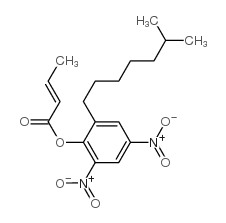Prenatal dinocap exposure alters swimming behavior in mice due to complete otolith agenesis in the inner ear.
L E Gray, J M Rogers, J S Ostby, R J Kavlock, J M Ferrell
文献索引:Toxicol. Appl. Pharmacol. 92(2) , 266-73, (1988)
全文:HTML全文
摘要
Exposure to the fungicide dinocap during gestation produces behavioral abnormalities in the house mouse that are not apparent at birth but become obvious at weaning. Pregnant mice (CD-1) were exposed on Days 7 to 16 of gestation to dinocap at 0, 6, 12, or 25 mg/kg/day and the postnatal behavioral development of the offspring was assessed. Torticollis (head-tilting) appears in the treated offspring at 3 weeks of age (4.4% at 12 and 25.3% at 25 mg/kg/day) and, during a test of swimming ability, many of the mice (6.8% at 12 and 47.2% at 25 mg/kg/day) sink below the surface or are unstable and swim on their side in the water. These behavioral abnormalities are the result of agenesis of the otoliths in the inner ears. These were the only developmental defects noted in the 12 mg/kg/day dosage group. In this group 4.4% of the mice displayed torticollis, 9.2% did not swim normally, 19% were missing one or more whole otoliths (7.7% were missing all four otoliths), and partial agenesis of the crystalline material was seen in an additional 11.6% of the mice. The frequency of behavioral and inner ear defects increased in the higher dosage group, but the order of sensitivity of the effects did not change.
相关化合物
| 结构式 | 名称/CAS号 | 分子式 | 全部文献 |
|---|---|---|---|
 |
敌螨普标准溶液
CAS:39300-45-3 |
C18H24N2O6 |
|
[Resistance of Brevipalpus phoenicis (Geijskes) (Acari: Tenu...
2007-01-01 [Neotrop. Entomol. 36(4) , 565-75, (2007)] |
|
An evaluation of figure-eight maze activity and general beha...
1986-07-01 [Neurotoxicology 7(2) , 449-62, (1986)] |
|
In vitro effect of karathane LC (dinocap) on human lymphocyt...
2005-03-01 [Mutagenesis 20(2) , 101-4, (2005)] |
|
[Poisoning with monocrotophos, dinocap, diodine and isopropy...
1988-05-23 [Ugeskr. Laeg. 150(21) , 1294, (1988)] |
|
[The extraction of karatan metabolites from aqueous solution...
1991-01-01 [Sud. Med. Ekspert. 34(2) , 41-3, (1991)] |